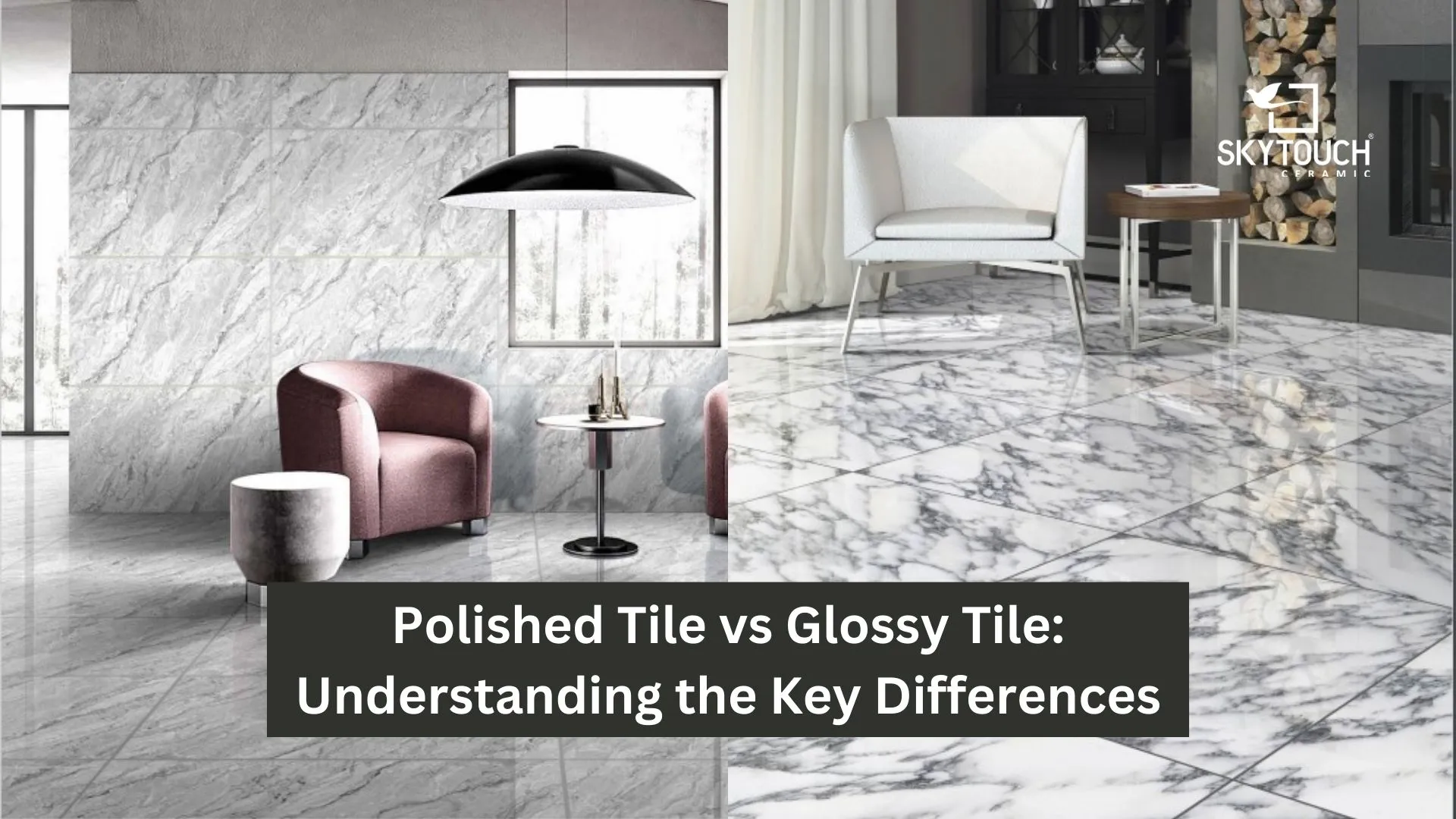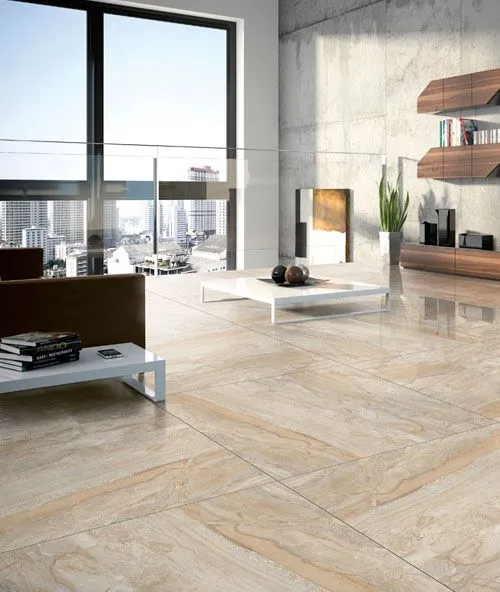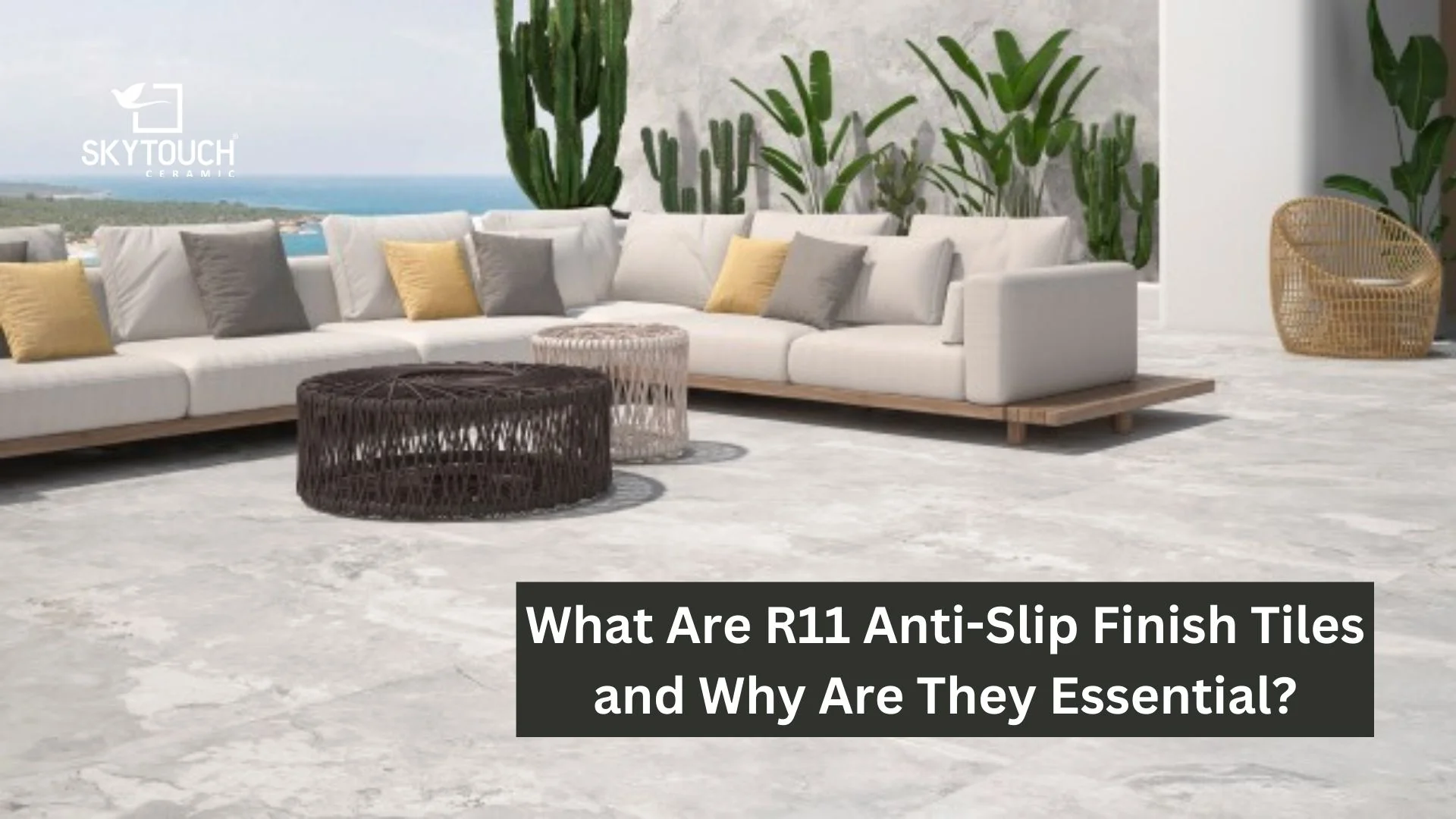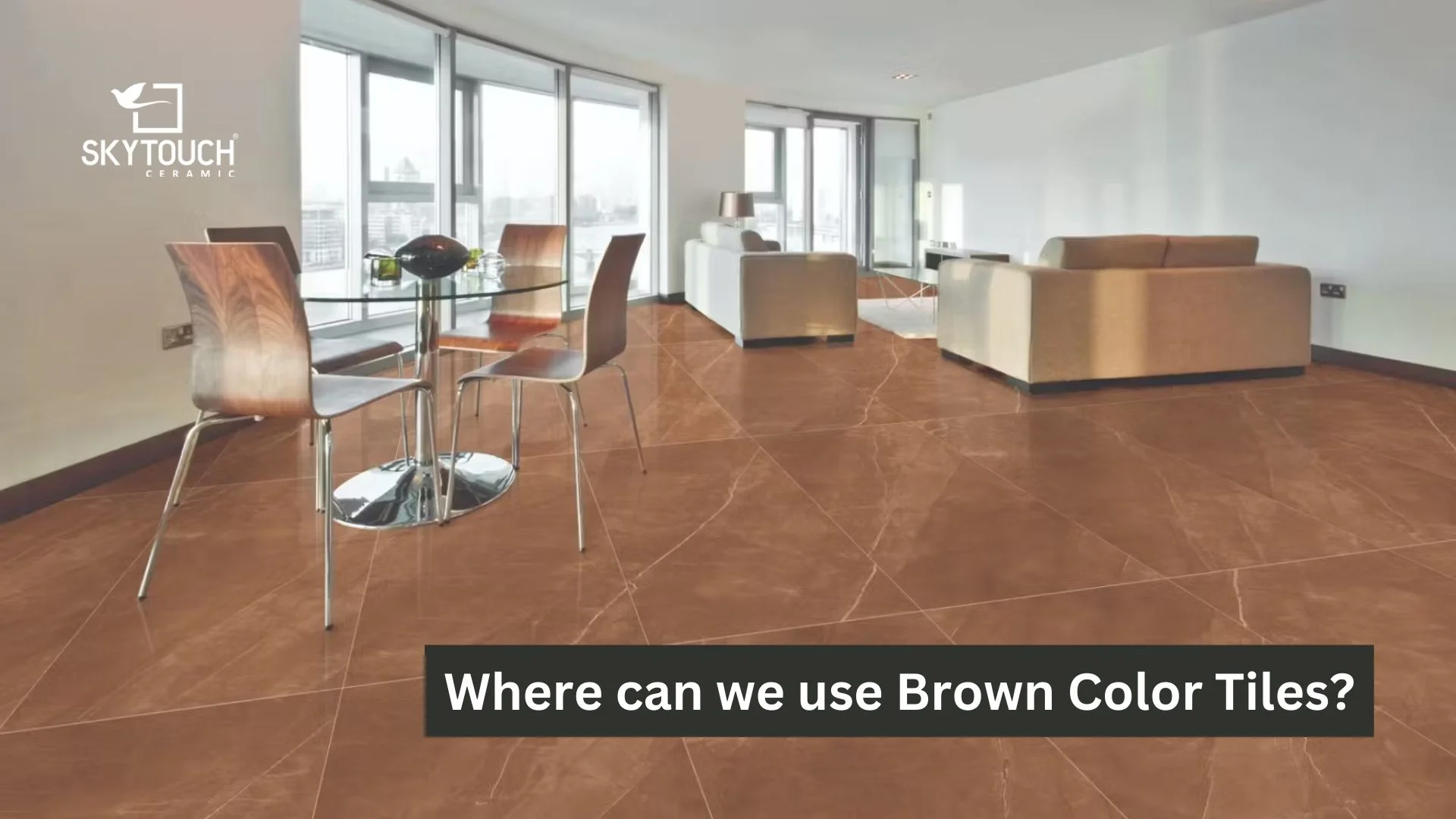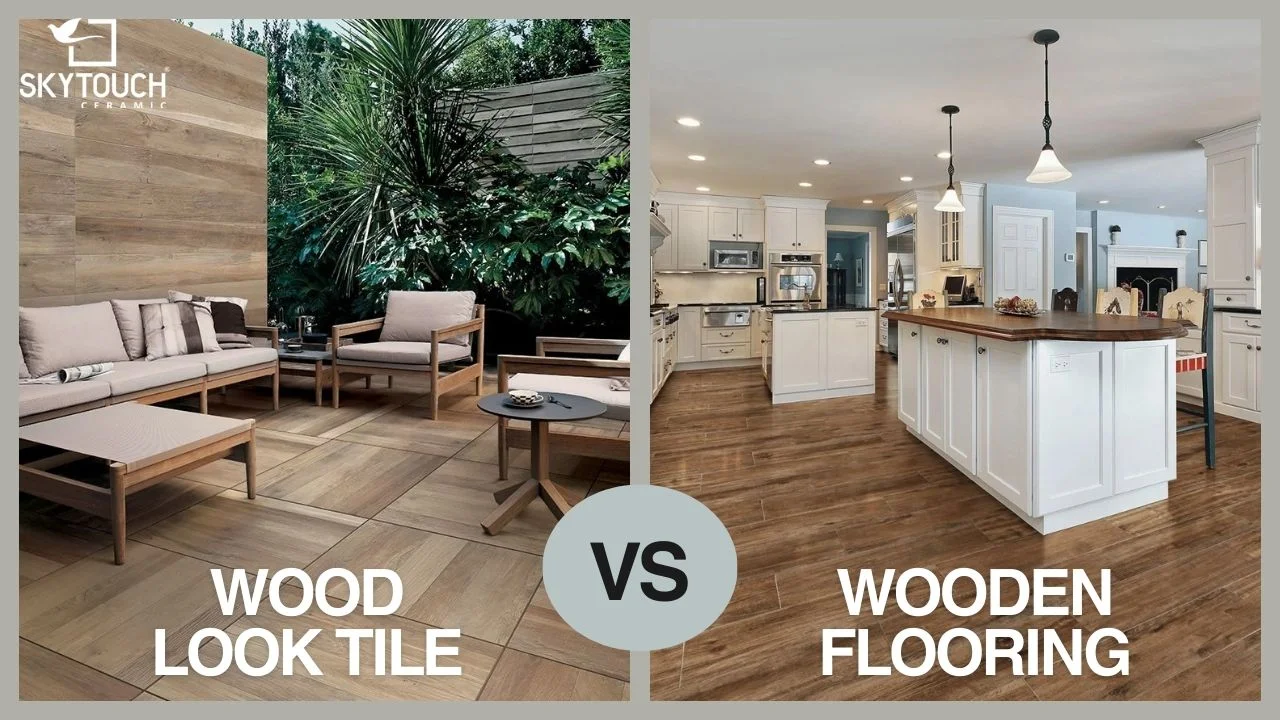You walk into the tile store ready to upgrade your bathroom and kitchen floors. You've narrowed it down to either polished or glossy tile but aren't sure what the differences are. Which one is better: polished or glossy? What are the pros and cons of each? Get ready to become a tile expert and understand the key differences between polished and glossy tile. With this knowledge, you'll pick the best option for your home's style and needs. Let's dive in and shed some light on the polished vs glossy debate.
What is Polished Tile?
Polished tiles are ceramic, porcelain, or stone tiles that are polished to a smooth, glossy surface, creating a refined, sleek appearance. It helps the tile take on the intensity of the hue color but retains the texture of the tile and doesn't reflect as a result so much. Elegant look, in floors, walls and countertops both residential and commercial spaces, polished tiles are popular. While they offer easy cleaning, they require regular maintenance to keep their shine, as they may show smudges and water spots. Their durability and sophisticated finish make them a favored choice for stylish spaces.
What is Glossy Tile?
Glossy tiles, feature a very reflective surface so the tile almost has a mirror like finish. Ceramic, porcelain, or stone tile of this type is usually glazed to increase its lustrous appearance, and can be made in a variety of colors. With its high gloss finish, it does a good job of filling a space with light and assisting in brightening up a smaller room or space that could use some extra vibrancy. In modern and contemporary interior design, whenever one has to create a bold, clean look to the kitchen and bathroom, glossy tiles are often used. Unfortunately, though, their shiny surface will have a tendency to show fingerprints, water spots and scratches, so regular clean and maintenance is required to keep their pristine appearance.
What's the Difference Between Polished and Glossy Tile?
• Shine Intensity
Polished tiles have a sleek, refined shine that catches the eye without being overpowering. Glossy tiles, on the other hand, pack a more vibrant, high-gloss punch. While both finishes add elegance, glossy tiles really make a space pop with their brilliant, mirror-like sheen.
• Maintenance Needs
That high-gloss gleam requires a bit more upkeep. Glossy tiles tend to show smudges, water spots, and scratches more readily than their polished counterparts. Polished tiles offer a lower-maintenance option with a gently radiant look that's easier to keep pristine.
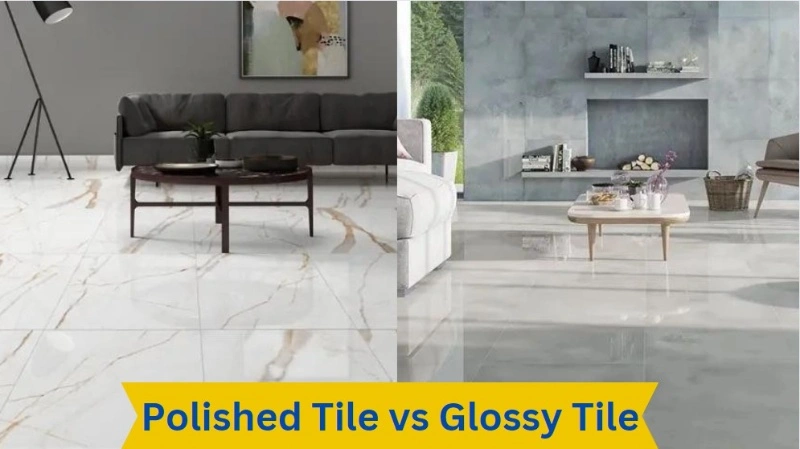
• Visual Impact
Polished tiles lend a sophisticated yet subtle vibe - perfect for creating a warm, inviting ambiance. Glossy tiles steal the spotlight with their dazzling luster, making a bold statement in contemporary settings. Consider how much shine you want when choosing between these two styles.
• Durability Factor
Both finishes are highly durable, but polished tiles get the edge for high-traffic areas. Their slightly more matte finish helps camouflage minor wear over time. Glossy tiles may show signs of traffic patterns or scuffs more quickly due to their ultra-shiny surface.
No matter which sheen you prefer, understanding the key differences will help you select the perfect polished or glossy tile to elevate your space. With the right finish, your floors or walls will be the picture of refined radiance.
Polished vs Glossy Tiles: Best Tile Finish for Each Space
| Space | Polished Tile | Glossy Tile |
| Living Room | Subtle, sophisticated look. Warm and inviting. | Modern vibe, but requires more maintenance. |
| Kitchen | Easy to clean, sleek and elegant. | Adds brightness but needs regular cleaning. |
| Bathroom | Practical, hides water spots, elegant for floors and walls. | Ideal for walls and showers, but requires upkeep. |
| Hallways & High-Traffic Areas | Hides scuffs, perfect for heavy foot traffic. | Requires more maintenance, shows marks easily. |
| Bedrooms | Soft, serene, and relaxing. | Too shiny for a calming atmosphere, needs balance. |
| Outdoor Spaces/Patios | Not ideal - slippery and wears out over time. | Avoid - too slippery for outdoor use. |
Pros and Cons of Polished vs. Glossy Tile
• The Polished Look
Polished tiles have a smooth, satiny finish that reflects light in a subtle way. This creates a more understated, refined look that can make spaces feel elegant and inviting. The polished surface also tends to hide scratches and wear better over time.
However, the matte appearance of polished tiles can make a room look a bit dull or flat if there isn't enough other lighting or contrasting elements. Polished tiles also require more maintenance to preserve the soft sheen.
• Glossy Glam
On the flip side, glossy tiles have an ultra-shiny, glass-like surface that amplifies light for a brilliant, almost mirrored effect. This high-gloss finish gives tiles a bold, contemporary vibe that can make small spaces feel more open and airy.
The downside? Glossy tiles tend to show every smudge, scratch, and imperfection. The highly reflective surface also creates more glare, which some find visually fatiguing. Glossy tiles require diligent cleaning to maintain that showroom sparkle.
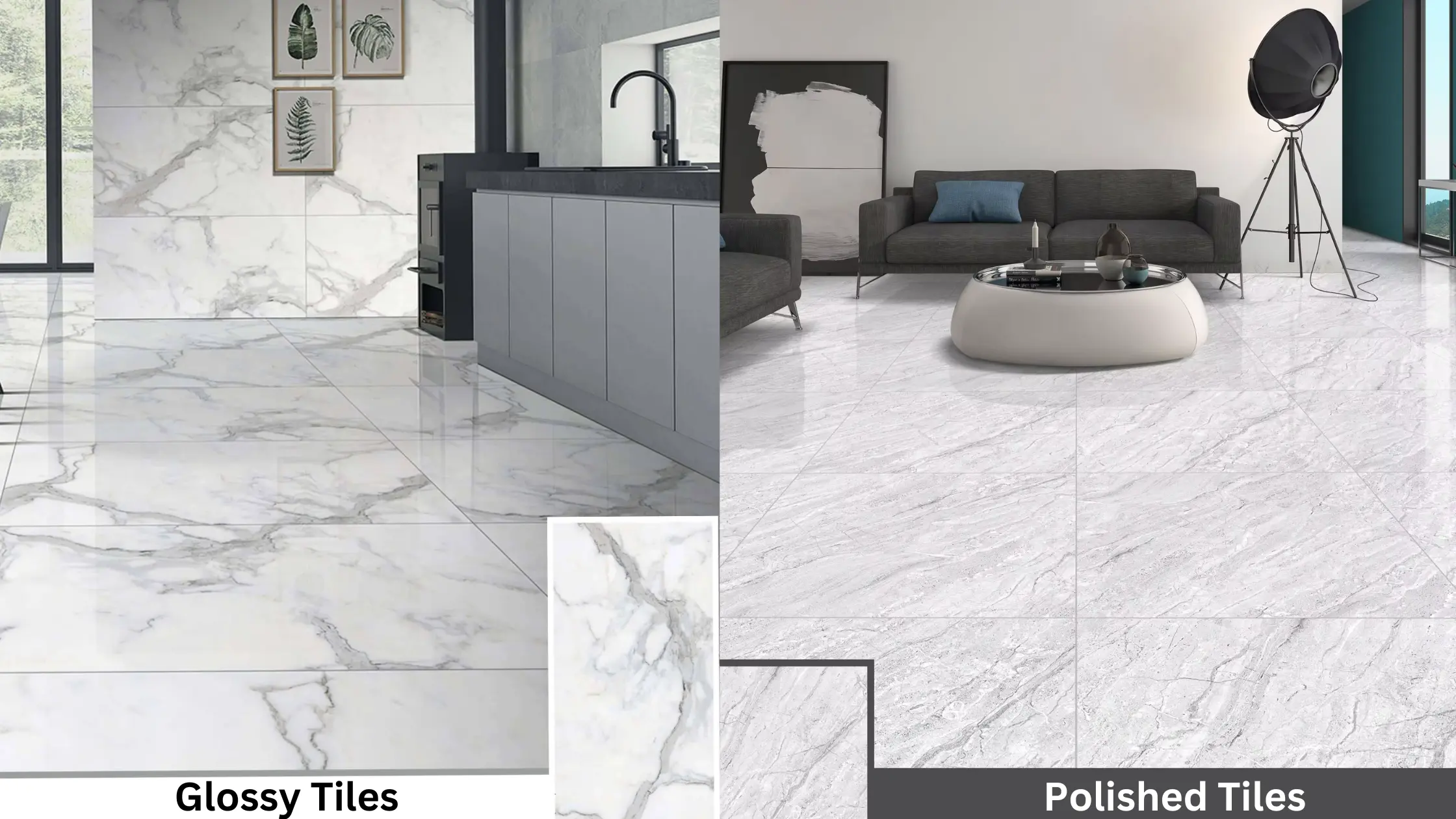
• What's Your Style?
At the end of the day, the polished vs glossy debate comes down to personal preference and the overall aesthetic you want to achieve. Polished tiles offer an understated elegance, while glossy makes a dazzling statement.
Consider the room's lighting, size, and purpose. Glossy works well for powder rooms or kitchens where you want a bright, vibrant look. Polished tiles may be preferable for living areas where you crave a more soothing, relaxed ambiance.
How to Identify Polished vs. Glossy Tiles
| Feature | Polished Tiles | Glossy Tiles |
| Shine | Subtle, refined shine with a smooth, sleek look. | High, vibrant shine with a mirror-like finish. |
| Texture | Smooth but slightly less slick than glossy. | Slick and glass-like, feels slippery. |
| Light Reflection | Soft, uniform reflection of light. | Intense, brilliant reflection that sparkles. |
| Appearance of Imperfections | Hides minor scratches and wear over time. | Shows smudges, fingerprints, and scratches easily. |
| Maintenance | Low maintenance; doesn’t show water spots or fingerprints as easily. | Requires more upkeep to maintain its shine and avoid visible imperfections. |
| Ideal For | Spaces where subtle elegance and low maintenance are preferred. | High-traffic areas or spaces requiring a bold, dramatic aesthetic. |
Which Is Better - Polished or Glossy Tile? Key Factors to Consider
• Foot Traffic & Durability
When deciding between polished or glossy tiles, one major factor is foot traffic levels. Polished tiles have a smoother, more refined surface that can show wear faster in high-traffic areas. Glossy tiles have a slightly rougher texture that helps camouflage scuffs and scratches better over time.
If you have a busy household with kids and pets running around, glossy may be the way to go for that added durability and slip-resistance. But polished tiles are easier to clean and maintain that "like new" look in lower traffic zones.
• Visual Appeal
There's no denying the sleek, modern appeal of highly polished stone or porcelain tiles. The shiny, glass like finish can give your floors an upscale, luxurious vibe. Polished tiles also enhance the natural veining and color variations in materials like marble or travertine.
Glossy tiles tend to have a more uniform, solid color look. While still shiny, the slightly textured surface gives them a more subdued elegance compared to polished. It's a great option if you want sheen without being "too shiny."
• Maintenance Requirements
One advantage of glossy tiles is they don't show dust, dirt and scratches as readily as polished. That honed yet glossy finish means you can get away with less intensive cleaning routines.
Polished requires a bit more elbow grease. You'll need to stay on top of cleaning and resealing to maintain that ultra-glossy, reflective surface. But many feel the extra effort is worth it for that gorgeous, glass-like look.
Conclusion
So there you have it - the main differences between polished and glossy tile. While they may look similar at first glance, understanding how they are made and how they perform can help you decide which is the better choice for your space and lifestyle.
Consider factors like durability, ease of maintenance, safety, and appearance. And don't forget to think about your own personal preferences too. The tile you choose for your home makes a statement. So take your time, weigh all the pros and cons, and select the tile finish that speaks to you. With the right information in hand, you'll end up with a floor, wall, or countertop surface you'll love living with for years to come.

